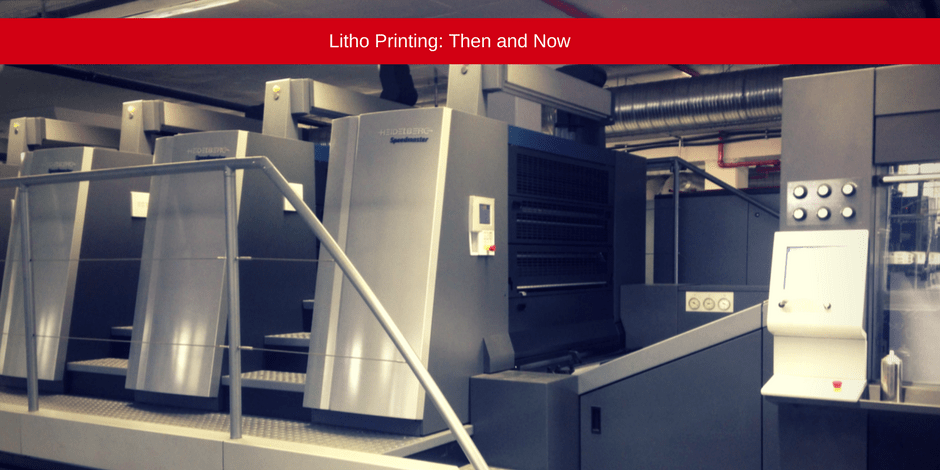Everything You Need to Know About litho printing
Everything You Need to Know About litho printing
Blog Article
A Comprehensive Overview to Recognizing Litho Printing Techniques
The world of litho printing, a method originating from the late 18th century, is a remarkable blend of history, scientific research, art and technology. Remain with us as we journey right into the fascinating world of litho printing.
The Historic Evolution of Litho Printing
The historical trajectory of litho printing, an essential technology in the realm of interaction, is a fascinating tale of human resourcefulness. Birthed in the late 18th century by Alois Senefelder, this technique was at first an economical technique of publishing theatrical works. Lithography, obtained from the Greek words for 'rock' and 'to create', used a smooth stone surface to transfer pictures onto paper. The process progressed with the advent of the rotating press, which significantly enhanced efficiency (litho printing). In the 20th century, the technology of offset lithography reinvented the industry, permitting mass manufacturing of top quality prints. Each stage of litho printing's evolution showcases humanity's relentless search of effectiveness and top quality in visual communication.
Decoding the Science Behind Litho Printing Inks
Relocating onward in the exploration of litho printing strategies, the focus now moves to the scientific research behind litho printing inks. The make-up of these inks, their drying process, and shade mixing techniques create the foundation of this complex art type. Understanding these aspects is essential to grasping the craft and attaining the preferred print outcomes.
Make-up of Litho Inks
In lithographic printing, the fundamental duty of litho inks can not be overstated. Pigments, the color-providing components, are finely ground fragments suspended in the car, a fluid that brings the pigment onto the printing surface area. Each element plays an essential part in the final print's quality, making the precise formulation of litho inks an intricate scientific research.
Ink Drying Process
From the composition of litho inks, attention turns to the interesting procedure of ink drying out. Two primary methods are used in litho printing: oxidative drying out and absorption. Absorption, on the various other hand, includes the ink leaking right into the paper fibers, which is a much faster procedure but can lead to much less vibrant colors.
Color Mixing Techniques
While the drying out procedure plays a key role in litho printing, the science of shade mixing strategies holds equivalent significance. This is an intricate procedure that includes the careful blending of main colors: cyan, magenta, and yellow, in differing percentages to attain a large variety of colors. The addition of black ink, known as 'key', assists in controling the intensity and depth of the shades. The scientific research behind litho printing inks likewise takes into consideration the transparency of the ink, which influences just how shades overlay and mix. To accomplish an effective page color mix, print professionals need to likewise understand the ins and outs of ink behavior, shade theory, and the physical residential properties of the substratum on which the ink is applied.
The Art and Design Aspects in Litho Printing
Litho printing breathes life into art and layout via its one-of-a-kind elements. The procedure involves creating a photo on a lithographic limestone plate or metal plate with a smooth surface. The photo is after that printed onto a tool, generally paper, by moving the ink from home plate. What sets litho printing apart is its capacity to reproduce complex layouts with high fidelity, making the result almost identical to the original artwork. This is attained via the usage of different line methods such as stippling, cross-hatching, and hatching, which allow for a range of tonal results. Litho printing suits a variety of shades, making it possible for artists to develop dynamic and dynamic prints. This mix of precision and convenience makes litho printing a preferred choice for numerous musicians and developers.
Modern Applications of Litho Printing Strategies
Litho printing methods have found substantial use in the modern-day industrial field. Its influence and relevance continue to expand with the development of new advancements and modern technologies in the area. This section will certainly explore these modern applications and the transformative role they play in the printing sector.
Industrial Litho Printing Uses
Litho printing stays an important component of the commercial field. High-volume printing jobs, such as the production of books, newspapers, and packaging, depend on litho printing for its capacity to supply remarkable photo top quality and price performance. Litho printing additionally offers a wide color spectrum, premium to that of electronic printing.
Technologies in Litho Printing
Pushing the limits of traditional strategies, modern improvements have actually fueled a host of technologies in litho printing. One look what i found famous growth is digital litho printing, which integrates the merits of digital innovation with litho's top quality result. These innovations highlight the long-lasting importance of litho printing in the modern world.
Discovering the Process of Litho Printing: Detailed

Obstacles and Solutions in Contemporary Litho Printing

Regardless of the accuracy and practice that litho printing happily promotes, it is not without its collection of modern obstacles. Digital litho printing permits for affordable brief runs and very easy personalization, resolving the concern of variable data. Thus, while there are challenges, the litho printing market is proactively adapting to meet them head-on, guaranteeing its importance in the future.
Final thought
Finally, litho printing, with its abundant background and scientific ins and outs, holds a considerable location in the print industry. As the overview discloses, it's a synthesis of art and technology, with modern-day advancements guaranteeing its relevance. Nonetheless, the industry deals with obstacles that require cutting-edge options, with a focus on automation and sustainability. The future of litho printing pivots on its capacity to adjust to these changing needs, verifying its long-lasting worth in a developing market.

Report this page